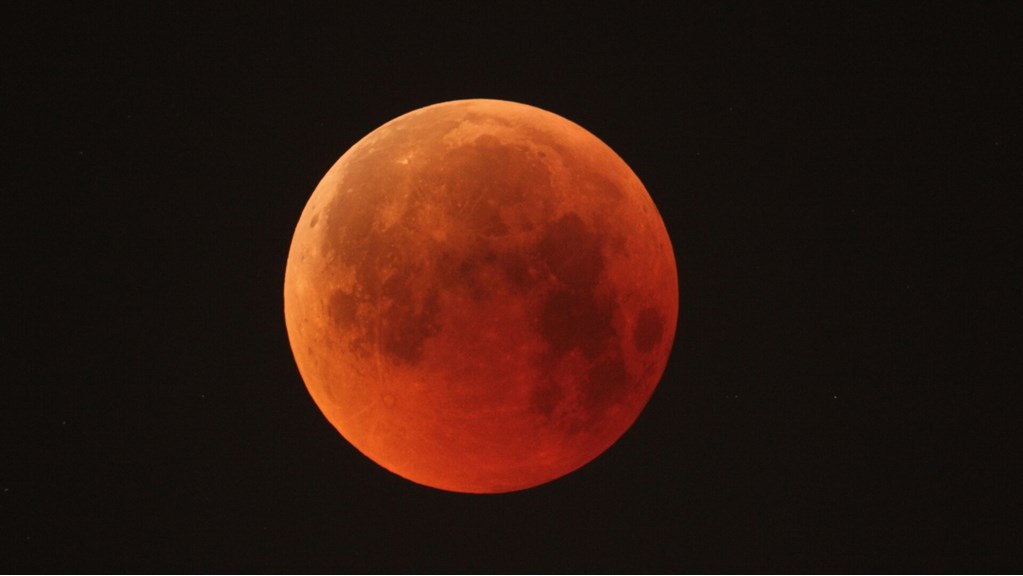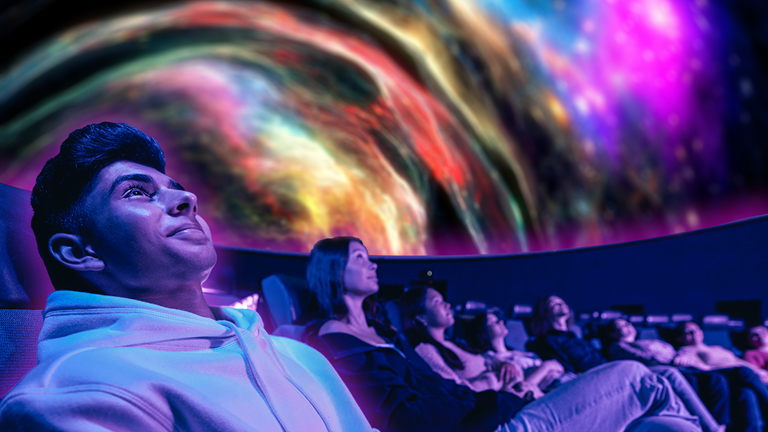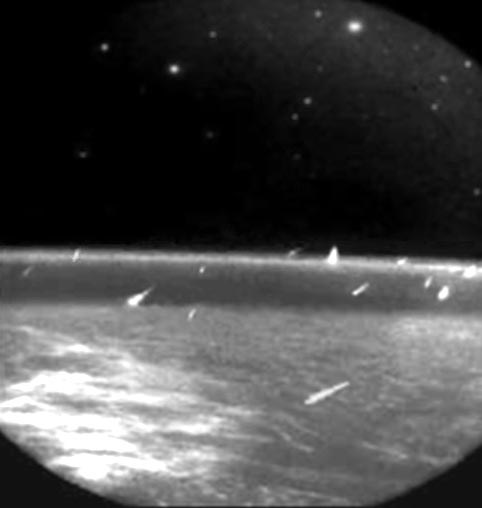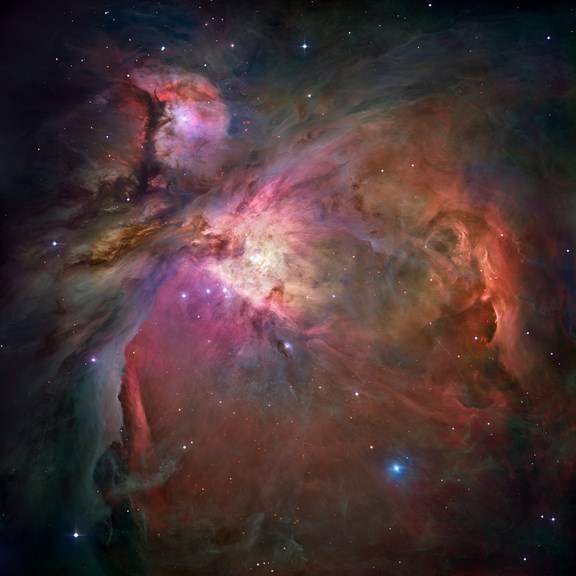Skynotes: November 2022
Upcoming events
Total Lunar Eclipse
This month a Total Lunar Eclipse will occur on the night of November 8th. As for all lunar eclipses, this will be during a full moon when our neighbour passes through Earth’s shadow which forms a long narrow cone that extends beyond the moon’s orbit. Weather permitting you can enjoy the full moon, followed by the total eclipse, and the full moon again for the remainder of the night.
Eclipses can only ever happen at full moon when the moon is on the side of Earth opposite the Sun with the moon’s Earth-facing hemisphere fully illuminated by sunlight. But not every full moon includes an eclipse.
The moon’s distance from us varies by about 50,000km in an elliptical orbit that is tilted a little over 5 degrees to the Earth’s orbit around the sun. For most full moons our lunar neighbour misses our planet’s shadow by passing either above or below. However, if the moon’s distance and orbital orientation are right then, just for a few hours, the Sun, Earth and Moon will be in a line and the moon will enter fully into Earth’s shadow. As the moon passes deep into the umbra, the darkest part of Earth shadow, we can enjoy a spectacular sight of a total lunar eclipse.
For several hours during this line up the sun cannot shine on the moon directly, the Earth being in the way, but a small amount of sunlight is refracted or bent by the Earth’s atmosphere to then reach the moon. But that light takes a longer path through the atmosphere. In doing so it is robbed of its blue wavelengths leaving only red light to bathe the surface of the moon, and we can marvel at a red moon in our sky. It’s a similar phenomenon that gives us a red sunrise or sunset as the atmosphere absorbs those same wavelengths due to a process called Rayleigh Scattering (see Red Skies at Night at The Conversation).

Melbourne’s Total Lunar Eclipse – Tuesday November 8th
| Full Moon rises | 7:53pm |
| Partial Eclipse begins | 8:09pm |
| Totality begins | 9:16pm |
| Totality ends | 10.41pm |
| Partial eclipse ends | 11:49am |
Learn more along with simulations at
Melbourne Sun times
| Date | Rise | Set | Day length | Solar noon§ |
|---|---|---|---|---|
| Monday 1st | 6:13 | 7:54 | 13:40 hrs | 1:03 |
| Thursday 11th | 6:03 | 8:05 | 14:01 hrs | 1:04 |
| Sunday 21st | 5:56 | 8:16 | 14:19 hrs | 1.05 |
| Tuesday 30th | 5:52 | 8:25 | 14:33 hrs | 1.08 |
§ When the sun is at its highest, crossing the meridian or local longitude.
Moon phases
| Date | Phase |
|---|---|
| First Quarter | Tuesday 1st |
| Full Moon and Lunar Eclipse | Tuesday 8th |
| Third Quarter | Thursday 17th |
| New Moon | Thursday 24th |
Moon distances
Monday 14th is lunar apogee (furthest from Earth) at 404,921 km.
Saturday 26th is lunar perigee (nearest to Earth) at 362,826 km.
Planets
Mercury is not visible this month after emerging from behind the Sun but will return to our pre-dawn sky in January.
Venus is similarly too close to the sun after its passage behind the Sun. However, in January it will reappear at dusk in the west as the ‘evening star’.
Mars is moving to opposition where it will be directly opposite the Sun as seen from Earth. It continues to be visible from midnight early in the month and progressively earlier each night until by the end of the month it will rise around 10.30pm. It will move across the northern sky before fading in the early dawn light.
Jupiter is bright and easily seen from around 8:30pm in the north-east after it traverses the northern sky before being lost to view low in the west by 3am.
Saturn can be seen as a pale yellowish object high in the north-east from 8:30pm early in the month before setting around 2.45am. By month’s end it will be visible from 9pm and set in the west by 1.30am.
Meteors
In November two meteor showers can be seen; the Taurids and the Leonids. If viewing conditions are favourable it is possible to see perhaps 10-15 meteors per hour.
The Taurids peak in the first week of November and can be bright, slow moving and include colourful fireballs. They appear in Taurus near the Pleiades star cluster and also close to the red star Aldebaran. In some years the activity is higher than the usual 10 per hour.
The Leonids appear in the constellation of Leo which rises in the north-east around 4am. These meteors enter the atmosphere at high speed leaving trains that can last minutes. They are seen from 13th–20th but peak on the morning of the 18th. They result from our planet intercepting the trail of particles left behind by Comet Tempel-Tuttle as it orbits the sun every 33 years. In 1998 thousands of meteors per hour were seen globally, but more recently the rate has been as low as 15 per hour for any given observing location.
Leonids visiting from space
Find out more
International Space Station
ISS orbits every 90 minutes at an average distance of 400 km appearing like a bright star moving slowly across the night sky. Here are some of the brightest passes expected this month over Melbourne and Central Victoria:
Evening
Wednesday 2nd 8:39pm-8:45pm South-West to North-East
Morning
Saturday 26th 4:28am-4:33am North-west to South-East
Heavens Above gives predictions for visible passes of space stations and major satellites, live sky views and 3D visualisations. Be sure to first enter your location under ‘Configuration’.
Stars and constellations
In the north
The constellation of Pegasus, the winged horse is in the north this month with Andromeda low in the north-west. Aquila (the eagle) and its principal star Altair (Alpha Aquilae) is in the north-west.
Low in the north this month is the Andromeda Galaxy, the furthest object visible to the naked eye at 2.5 million light years. This large spiral galaxy contains perhaps 1 trillion stars and takes up an area in the sky larger than the moon. For more enjoy NASA’s Swift Tour of Andromeda Galaxy.
In the west
Spectacular Scorpius is now in the west. The red-giant star Antares (Alpha Scorpii) sits as the middle of three stars that form arachnid’s body. Sagittarius, the centaur-archer is above with its bow and arrow forming the well-known Teapot asterism. Further up sits Capricorn, the sea goat, the strange goat with the tail of a fish.
In the east
Rising this month in the east during late evening is Orion, the hunter. One of his feet is the blue-giant star Rigel (Beta Orionis) and a shoulder is marked by the red-giant star Betelguese (Alpha Orionis). The three bright stars that form his belt (Alnitak, Alnilam and Mintaka) are the base of the Saucepan asterism. The scabbard hanging from his belt forms the saucepan’s handle. In the southern hemisphere these all appear upside down. In the centre of the scabbard or handle is the beautiful Orion nebula - a vast gas cloud over 1300 light years away where stars are being formed.
Also rising In the north-east later in the night is Taurus, the bull with the red-giant star Antares (Alpha Scorpii). In the south-east will be Canis Major, greater dog with its principal star Sirius (Alpha Canis Majoris), the brightest star visible at night and also known as The Dog Star.
As we approach summer, all these eastern features will rise earlier each night to create a diverse set of impressive constellations and significant stars.
In the south
Low in the south this month is Crux (Southern Cross) with the two Pointers, Alpha and Beta Centauri, to its right in the constellation Centaurus. In the south-east shines the second brightest star at night Canopus (Alpha Carinae), the principal star for the constellation Carina, the Keel.
The broad band of the Milky Way arcs from south-east along the western horizon to north-west. During the night as the Earth rotates to the east it will ‘wheel’ across the sky so that by 3am it will stretch from west to east.
On this day
1st 1963, then largest radio telescope, the Puerto Rico Arecibo Observatory, opens utilising a natural valley and transceiver suspended from pylons on nearby peaks.
3rd 1957, Laika, a 3-year husky-Samoyd dog, became the first animal into orbit in Sputnik 2 (USSR). While never intended to return to Earth, she expired from heat stress after only a few hours.
3rd 1973, Mariner 10 (USA) launches to Mercury, the first probe to use a gravitational ‘slingshot’ around a planet to reach an objective (in this case, Venus).
4th 2003, largest solar flare recorded causes radio blackouts and saturates satellites, and was associated with a Coronal Mass Ejection (CME) many times larger than Earth leaving the Sun at 2,300 kph.
8th 1656, birth of second Astronomer Royal Edmund Halley who calculated several historical comets to be the same. He successfully predicted its regular 76-year return. It posthumously carries his name.
9th 1934, birth of American astrophysicist and science communicator Carl Sagan.
12th 2014, First landing on a comet and direct surface images of Comet Churyumov-Gerasimenko by Philae lander from ESA’s Rosetta probe.
12th 1980, Voyager 1 (USA) has historic close encounter with Saturn at 124,000km. It then flew by moon Titan which precluded going on to Uranus or Neptune, although both were later visited by Voyager 2.
13th 1971, Mariner 9 (USA) is the first spacecraft to orbit another planet, Mars. Months of a planet-wide dust storm finally cleared to allow pictures of the surface.
14th 2003, Sedna, a TNO (Trans Neptunian Object) is discovered in a 11,400 year elongated orbit, one of the most distant objects known in the Solar System.
15th 1738, discoverer of Uranus and infrared radiation, William Herschel, is born.
16th 1965, Venera 3 (USSR) is launched to Venus becoming the first probe to reach the surface of another world.
16th 1974, first radio message sent into space (USA/Puerto Rico). ‘Arecibo Message’ to star cluster M13 25,000 light years away took 3 min. Its 1,679 binary '1's and '0's if arranged in 23 columns and 73 rows will reveal visual information (prime numbers 23 x 73 = 1,679).
17th 1970, Lunokhod 1 (‘Moon Walker’, USSR) first remote-controlled moon rover. Delivered by lander Luna 17, it drove 10km and lasted 321 Earth days, far longer than the expected 3 months.
20th 1998, First module for the ISS, Russia’s 12 metre Zaryu (‘Sunrise’) or Functional Cargo Block, is launched beginning a multi-module multi-year assembly of the space station in low Earth orbit.
26th 2012, Curiosity rover (USA) arrives in Mars’ Gale Crater after a high-speed entry and first use of an innovative final landing technique – the ‘sky crane’.
27th 1971, first probe to reach the Martian surface is Mars 2 (USSR) although it crashes in the process.
27th 2001, first detection of composition of exoplanet’s atmosphere – by Hubble Telescope for planet Osiris orbiting a sun-like star 150 light years away.
28th 1967, Cambridge postgraduate student Susan Jocelyn Bell discovers the first pulsar, initially named LGM1 for “little green men”. Its regular 1.3 sec radio pulse revealed these pulsating stars to be rapidly spinning neutron stars.
29th 1967, Australia becomes the third nation after USSR, USA and France to launch a satellite from its own territory. The 45kg WRESAT-1 (Weapons Research Establishment Satellite) made 642 polar orbits until re-entry 11 days later.
30th 1609, Galileo studies the Moon with his improved telescope, and while not the first to do so he was the first to explain mountains and craters, and chart lunar features and their heights.
30th 1954, Ann Elizabeth Hodges of Alabama, USA, becomes the first person injured by a meteorite. She was badly bruised by a 5kg rock that crashed through her roof, deflected off a radio cabinet, and hit her while she was asleep on the couch.


